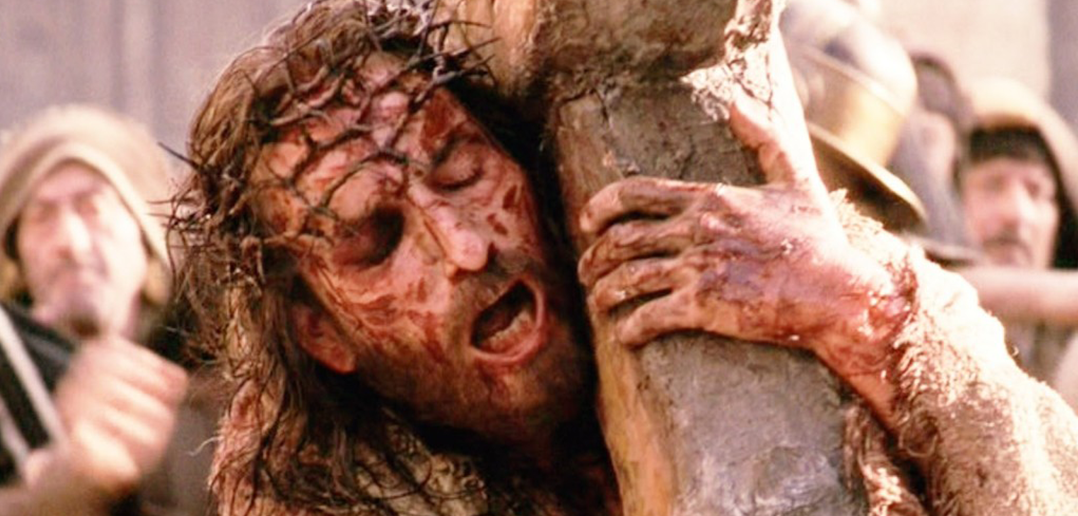“Unless there is a Good Friday in our lives, there will never be an Easter Sunday. The Cross is the condition of the empty tomb, and the crown of thorns is the preface to the halo of light.” -Archbishop Fulton Sheen
Over ten years later it is easy to forget just how consumed America was by Mel Gibson’s “The Passion of the Christ” upon its release. The highly anticipated film, which premiered on Ash Wednesday 2004, opened on 3,000 screens that day amidst a maelstrom of controversy.
Critics of the film were many. David Denby of the New Yorker called it a “two hour snuff film”. The New York Times said that the film “lacked grace”. Noted atheist, the late Christopher Hitchens, accused the film of being both “fascistic and sadistic”. As is often the case, the cultural and media elite were completely wrong.
Despite explicit and unrelenting R-rated violence, accusations of anti-Semitism, and dialogue exclusively in Latin and Aramaic, the movie still went on to become a cultural phenomenon. By the time “The Passion of the Christ” left theatres four months later it had earned $370.3 million in domestic box office and over $600 million worldwide.
Despite charges from its critics that no one would be evangelized by such a violent and narrowly focused film, there were indeed millions moved by Gibson’s film. For one full month the national dialogue was completely focused on Our Lord and the passion narrative.
Gibson and Newmarket Films effectively targeted churches, many of them Evangelical, in a grass roots marketing campaign months in advance of the films release. Many groups either received free previews or were encouraged to rent out theatres for their congregations.
What is most interesting looking back a decade later is just how very Catholic the movie is. This is also part of the reason why so many critics were confused. Those who wanted the standard “life of Christ” Hollywood bio were stunned that the movie only focused on His final 12 hours and brutal execution.
For Catholics, however, it all made perfect sense.
The Passion of the Christ is simply a contemporary take on the classic medieval Passion play. It is the Sorrowful Mysteries of the Holy Rosary brought to life, beginning with Christ’s agony in the garden and continuing all the way through His crucifixion. The film is a cinematic Stations of the Cross, in all its brutality and truth.
In addition to relying upon the gospel accounts, Gibson turned to the visions of 19th century Catholic mystic Blessed Anne Catherine Emmerich for help. Many of the films more obscure and nuanced moments come to us directly from Emmerich’s visions as presented in her Dolorous Passion of Our Lord Jesus Christ.
Lastly, the Passion of the Christ is a very Marian movie. Our Lady is there throughout the movie, just as she was throughout Our Lord’s ordeal. For many non-Catholics, this was something else to ponder. Mary’s maternal suffering and sacrifice is on full display within the movie.
For the first time ever, many non-Catholic Christians were also required to meditate upon Christ’s suffering and death on that Good Friday two thousand years ago. Many Protestant communities had long since rejected the crucifix and instead opted for the empty cross. To these viewers of the Passion, the sight of a bloody and beaten savior was revelatory. Venerable Archbishop Fulton J. Sheen in his seminal work The Life of Christ wrote:
“Unless there is a Good Friday in our lives, there will never be an Easter Sunday. The Cross is the condition of the empty tomb, and the crown of thorns is the preface to the halo of light.”
In the years since its release, families have made it a tradition to watch the Passion every Lent. I have family and friends who makes it a part of their Good Friday observance every year. I have also heard of some parishes and small fellowship groups (and even youth groups) who come together to view it in community.
In our fallen human nature we have a great capacity to forget the uncomfortable and to instead seek out safety and complacency. On this Good Friday, now may be the time to once again revisit Gibson’s “The Passion of the Christ”.
A version of this article originally appeared at the authors blog.



